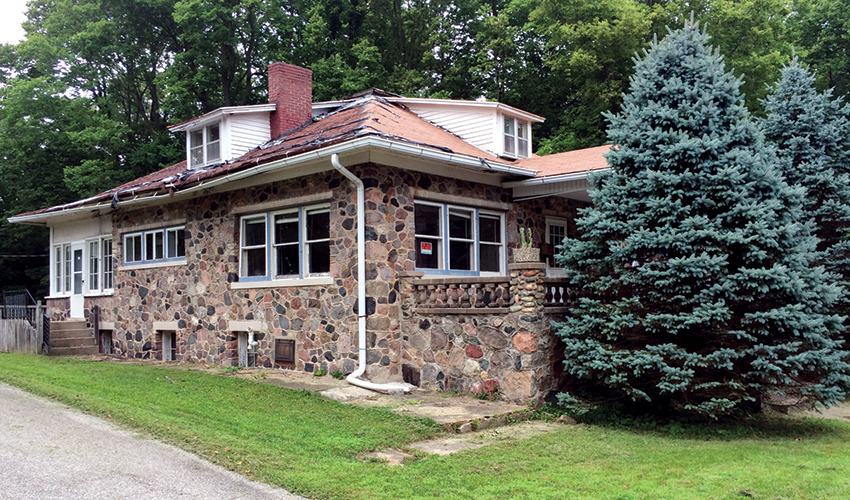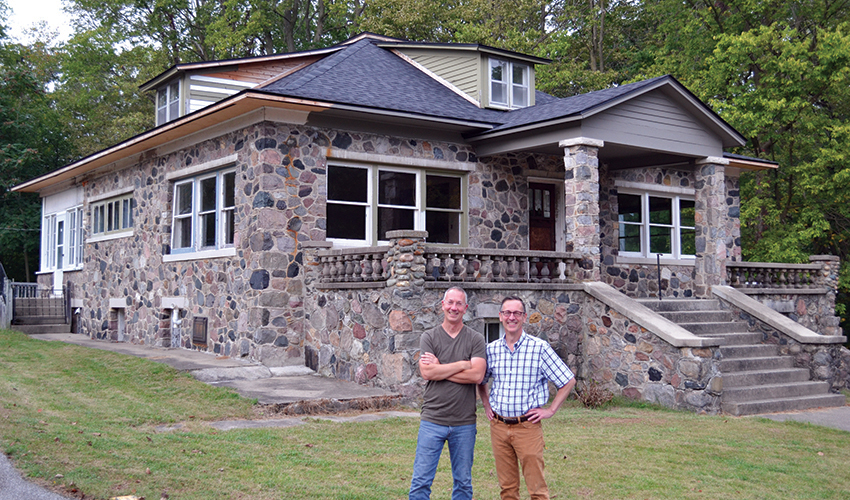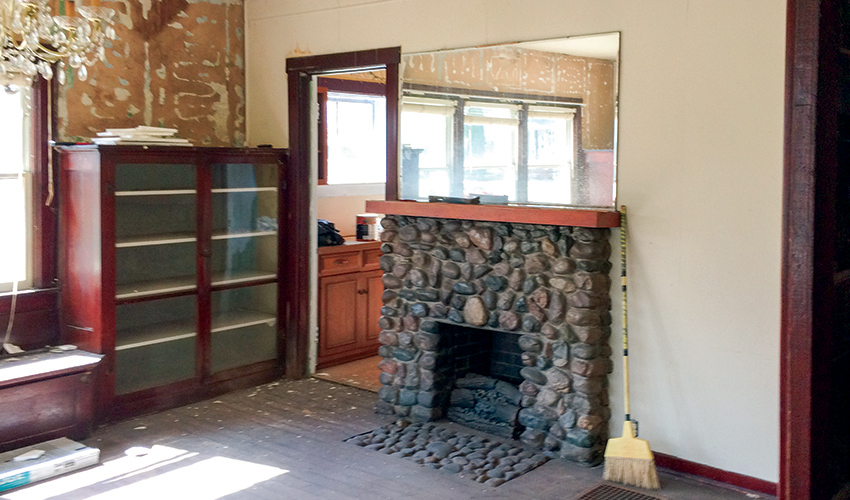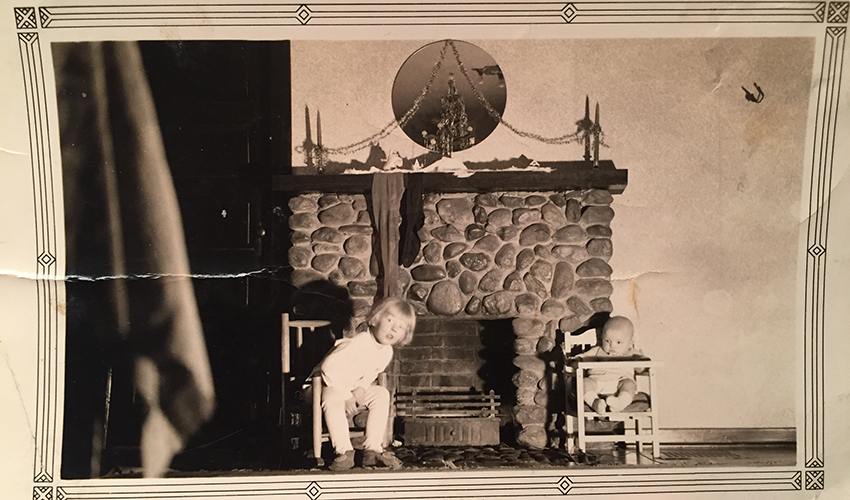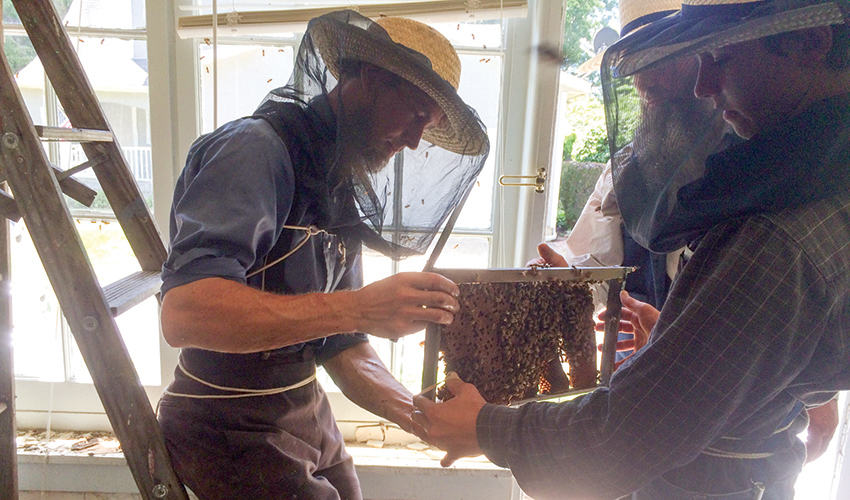NEWS
Reclaiming a Beloved Bungalow
Hidden by trees, infested by bees, a Delphi house’s transformation is peppered with rehab challenges and happy discoveries.
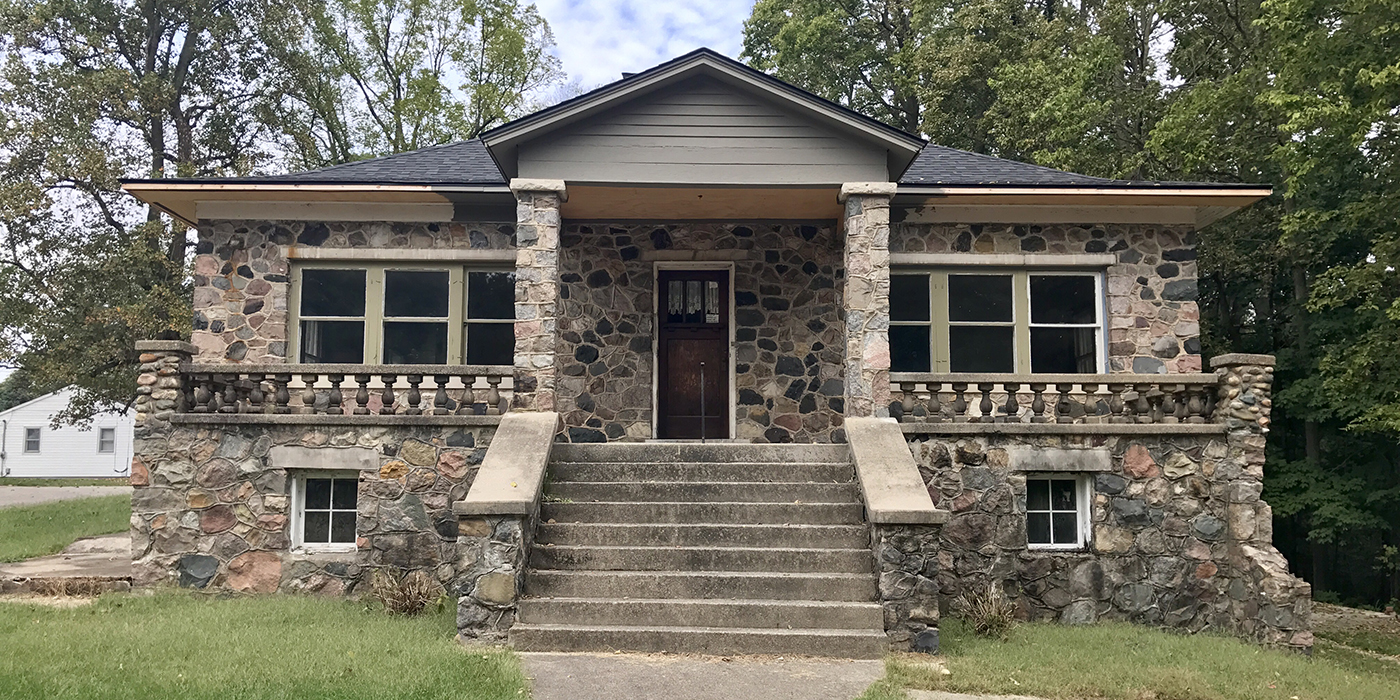
Rock Solid Investment
Jeff Been had always been intrigued by a Delphi bungalow with a fieldstone façade and porch. As a child, he walked by the house on East Monroe Street on the way from school to the park. Been lives in Louisville now, and on a visit home, he found the charming porch obscured by large spruce trees and noticed holes in the roof. He and his partner Eric Graninger also noticed a small “For Sale” sign.
“We realized it had good bones and great potential and it needed to be saved. We were crazy enough to do it,” says Been.
Like the outside, the interior displays strong Arts and Crafts influences, including a built-in window seat, original woodwork throughout, built-in china cabinets, and a fieldstone fireplace. The windows and the front porch offer views of a nearby ravine.
Been and Graninger brought old house wisdom and DIY expertise to the project. They own an 1848 farmhouse in Carroll County, and live full time in a “bungalow on steroids” they fixed up in Louisville’s Cherokee Triangle neighborhood. While in law school in Indianapolis, Been had restored a historic rowhouse on Alabama Street.
In Delphi, the pair started by putting a new roof on the 1919 bungalow, and consulted with Indiana Landmarks’ western office on appropriate roof shingle colors, given the home’s unusual split granite exterior. Early on, work was interrupted when they discovered a swarm of bees in the house. They called on a beekeeping family who had removed a colony from their farmhouse. The beekeepers chipped away at plaster to retrieve the queen bee so the swarm would follow, leaving behind two five-gallon buckets of honeycomb.
Been and Graninger removed a crumbling ‘30s-era carport and started replacing plumbing and wiring and repairing water-damaged walls. After they had sealed up the house, a neighbor called Been to inform him that a raccoon was peeking through windows from inside the house. Been trapped the tenant and released it on the farm.
“There are very good days, and then some more depressing,” says Been, who is supervising the work in retirement. “You always discover surprises when you start these projects.” While cleaning out one of the window wells, he found etched in concrete the words, “Mrs. Chas Murphy Builder, June 1, 1919, Begun Sept 1915, Delayed by WAR.”
Research revealed that the property was built by Elizabeth Fisher Murphy using rocks she and her friends collected from throughout the country. A schoolteacher, Murphy traveled the U.S. lecturing and demonstrating her dress reform system. She also held local acclaim as a good friend of James Whitcomb Riley, allegedly inspiring his poem “Curly Locks.”
“It’s cool that in 1919, a woman is describing herself as the builder of this house. There’s great energy there,” says Graninger
Been and Graninger are still determining what they will do with the bungalow when the rehabilitation is complete. “Delphi has this terrific fabric of homes. That’s another reason we felt strongly about saving this one,” says Graninger. “This is such a neat little town, just losing one house in that fabric can hurt it.”
Stay up to date on the latest news, stories, and events from Indiana Landmarks, around the state or in your area.

